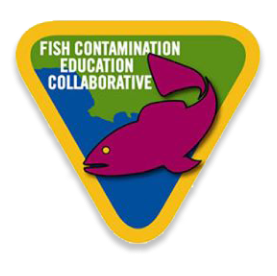Eat Outside of the Box
Our dinner choices matter, according to Dave Anderson, a marine biologist at Seafood for the Future, a program at the Aquarium of the Pacific in Long Beach. Learn how you can make a difference by being conscientious of what fish you order at your favorite restaurant, among other things. Check out a video showing delicious ways of preparing sustainable seafood.
FCEC: So Dave, tell us a little about Seafood for the Future. What is it exactly? What’s the organization’s mission?
Dave Anderson: Seafood for the Future is a non-profit program of the Aquarium of the Pacific in Long Beach, California. We promote sustainable seafood practices among restaurants, wholesalers and distributors. Our goal is to connect the public with healthy, sustainable seafood options. The seafood we choose, if sold at a local restaurant, is marked with our logo of approval so that better choices can be more easily recognized. When a consumer chooses this item, not only will they be ordering the best eco-friendly seafood, they’ll also receive a free ticket to the Aquarium of the Pacific.
FCEC: How many restaurants are you currently working with?
Dave Anderson: Currently we work with 75 restaurants and 12 distributors from Santa Barbara all the way down to San Diego. But those numbers are ever-growing.
FCEC: Why should people care about whether or not they are eating “sustainable” fish?
Dave Anderson: In terms of environmental sustainability, eating the fish we pick helps to better manage our natural resources, which in some cases are in rapid decline. In addition to this, fish resources that are properly managed are often healthier for people to eat. So when we engage chefs directly we are helping to improve their practices: from purchases to preparation, and ultimately the quality of their menus improves.
FCEC: How can one’s individual food choices make a positive impact?
Dave Anderson: One’s food choices, especially in the case of seafood, can have an immediate and direct impact, not only for sustainability, but for the entire market place. When sustainable seafood is in high demand, chefs are more likely to make sure to carry such products.
About 80% of our seafood is imported, much of this seafood comes from areas in the world that do not have the same environmental safeguards as the United States. So if their production and harvesting practices are harmful, we aren’t likely to know about it. But when we eat sustainable seafood we ensure that the fishing practices meet our requirements.
FCEC: What are some of the fish that people should look to purchase?
Dave Anderson: Seafood from Alaska, wild Pacific salmon is an easy one to remember. Their stocks are quite healthy up there. Some other easy ones are sardines and mackerel – both of which reproduce fast, making them more environmentally sustainable.
FCEC: What are a few things that are having the greatest impact on threatened fish populations?
Dave Anderson: Two things: fishing pressure and habitat decline. The latter happens with overdevelopment and immediate pressures on the eco-system, such as oil spills.
FCEC: How can people further educate themselves about these issues?
Dave Anderson: First and foremost, people need to pay attention to what it is they are eating. Awareness on every level will help. Once people are aware of where their food comes from, what it is exactly, then they are more likely to make better, healthier food choices. This is where Seafood for the Future and FCEC overlap and seek to achieve the same goal: helping people make better, healthier fish consumption choices.


